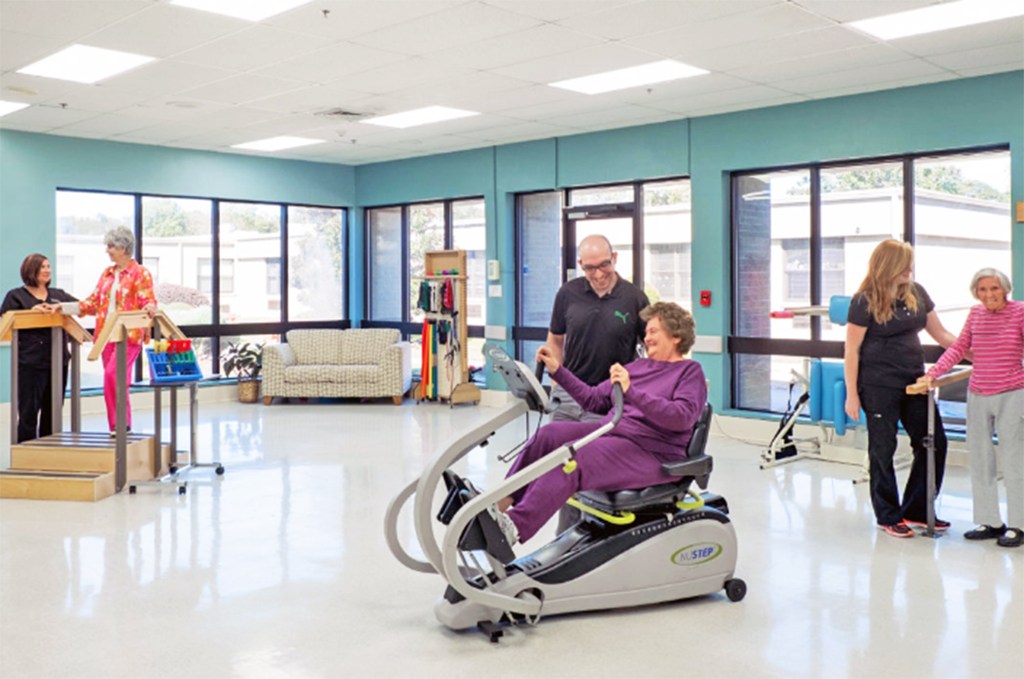YOUNG AT HEART IN LIMESTONE: Finding what physical rehab options work best for you
Published 2:00 pm Sunday, February 25, 2018

- Patients at Senior Rehab & Recovery Center at Limestone Health Facility receive supervised physical therapy in this undated courtesy photo.
It’s no secret that as we age, it becomes harder to bounce back from a major surgery.
For older adults, rehabilitation centers are often the best option for those who need around-the-clock care and rehabilitation after a hospital stay. Families in Athens and Limestone County in need of such a facility have several to choose from in the area.
One of oldest rehabilitation centers is Senior Rehab & Recovery Center at Limestone Health Facility. It’s been privately owned and operated for more than 50 years, which an official said is a good thing.
“We’re not part of any chain, which is very rare for rehab facilities in the state of Alabama,” said Wade Menefee, human resources director for Limestone Health Facility.
The rehab side currently has 34 beds. Menefee said there are no plans to expand the rehab facility at this time.
How rehab works
The majority of rehab patients are referred by hospitals. For eligible patients, Medicare covers stays of 21 to 100 days. If the patient is not fully rehabilitated by the end of 100 days, Medicare could elect to extend coverage an additional 21 days.
Most rehab centers offer a mix of physical and occupational therapy. Senior Rehab & Recovery Center at Limestone Health Facility also offers speech therapy for those who need it. Menefee said plans of care are individualized for the patient.
“(Patients) are in house for rehabilitation and to get better and get back to their highest level of functioning,” Menefee said. “Unfortunately, that’s not always achievable and we do have a long-term care side.”
He anticipates the need for rehab facilities to increase in the future as there are more than 74 million baby boomers in the United States. He explained many baby boomers, in an attempt to remain active, are having elective surgeries like knee and hip replacements and need rehab services earlier in their lives.
Injury statistics
Not all surgeries are elective, however. An estimated 2.8 million older Americans are treated each year for fall-related injuries, many of which require surgery, lengthy hospital stays and rehabilitation.
According to the Centers for Disease Control and Prevention:
• One out of five falls causes a serious injury such as broken bones or a head injury;
• More than 800,000 patients a year are hospitalized because of a fall injury, most often because of a head injury or hip fracture;
• Each year, at least 300,000 older people are hospitalized for hip fractures;
• More than 95 percent of hip fractures are caused by falling, usually by falling sideways;
• Falls are the most common cause of traumatic brain injuries; and
• Adjusted for inflation, the direct medical costs for fall injuries are $31 billion annually. Hospital costs account for two-thirds of the total.
Finding a facility
Hospitals may refer a patient to a particular facility, but family members and patients should also do homework when choosing what rehab facility works best for them. Most rehab facilities have websites that contain helpful information about what they provide, but few provide information on recorded incidents and a true picture of overall patient care.
U.S. News & World Report has a website devoted to ranking nursing homes and rehab facilities across the country. Ratings, which are capped at 4.0, are based on a combination of Centers for Medicare and Medicaid Services ratings, health inspections and staffing.
To view the list, visit http://bit.ly/2EICErL.
Patients and family members may also find information about health care deficiencies through the Alabama Department of Public Health. The website, http://bit.ly/2BJVfFp, is searchable by county. To view reports for a particular rehab facility or nursing home, simply click the “Select” button next to the name of the facility.





